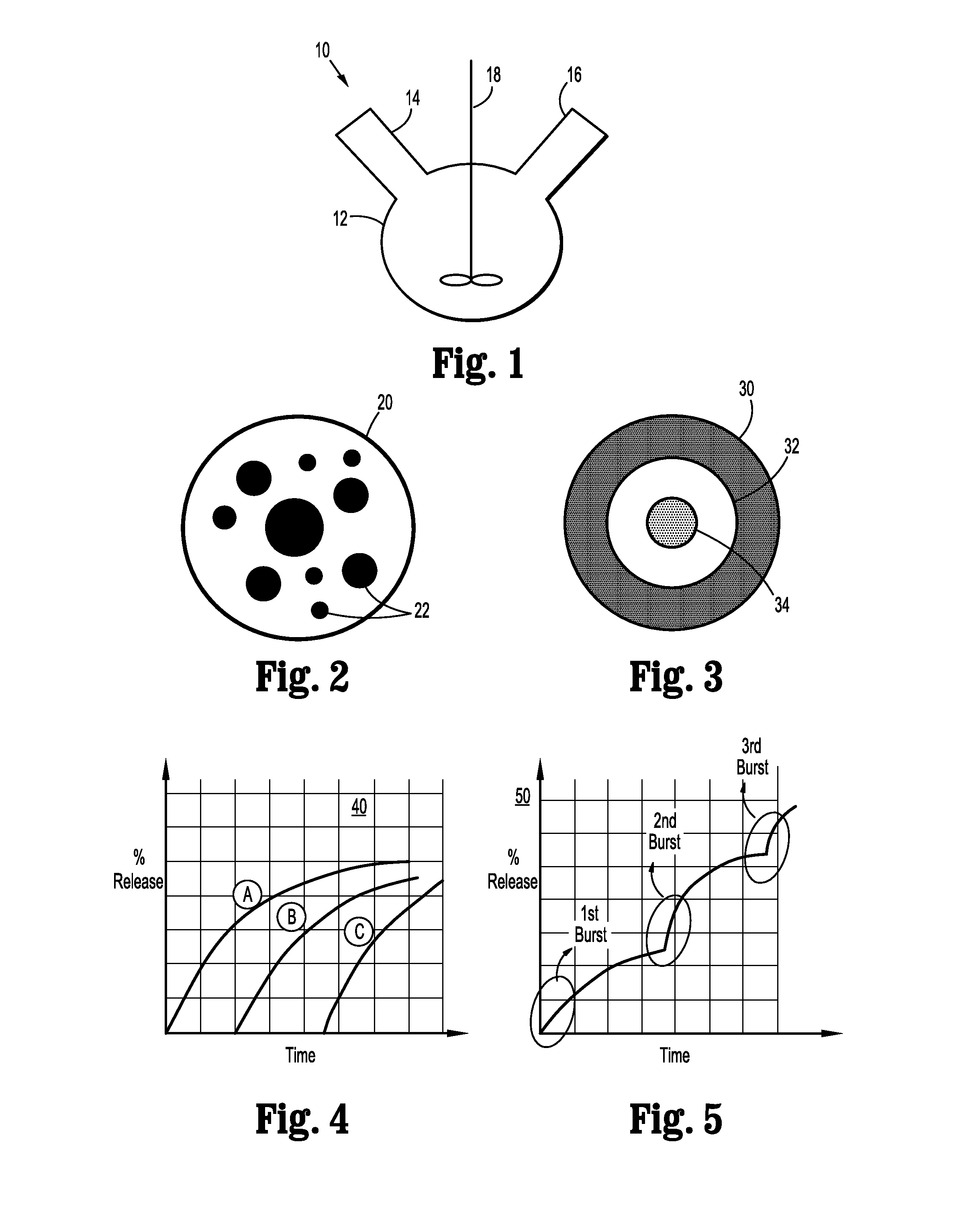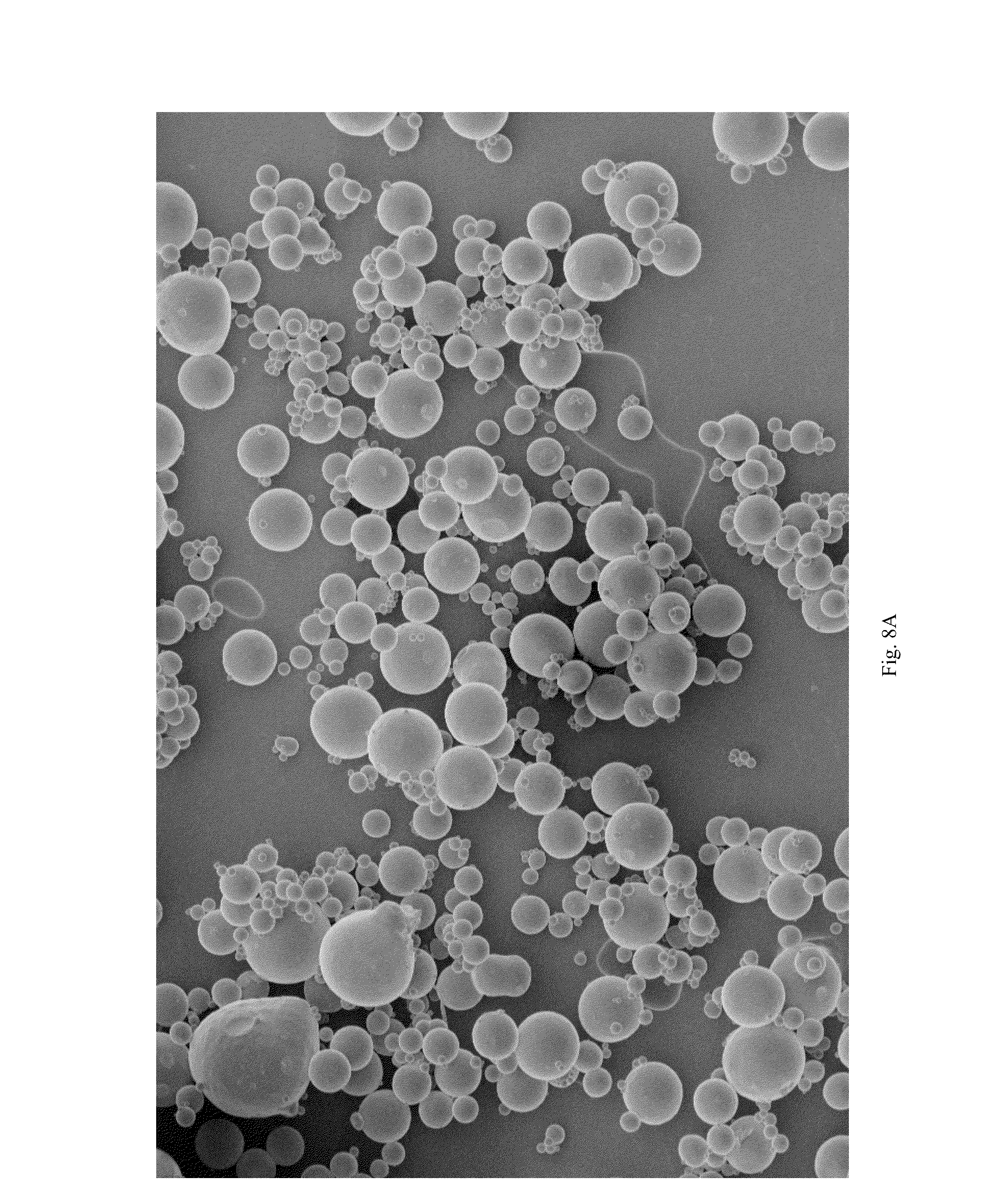Microspheres Including Oxidized Cellulose
a technology of oxidized cellulose and microspheres, which is applied in the field of systems and methods for dissolving cellulose, can solve the problems of requiring the use of cellulose products, cumbersome or expensive traditional cellulose dissolution processes, and insufficient utilization of cellulose and cellulose products
- Summary
- Abstract
- Description
- Claims
- Application Information
AI Technical Summary
Benefits of technology
Problems solved by technology
Method used
Image
Examples
example 1
[0341]Dissolution of oxidized cellulose having a degree of oxidation of 0.6 in a solution including 1% by weight of LiCl in N-methyl-2-pyrrolidinone (NMP).
[0342]A 100 mL three-neck round-bottom flask was used as a reactor vessel and was fitted with a gas inlet, a mechanical stirrer, and a gas outlet, which was then connected to a flow rate monitor. The flask was purged with argon for about 5 minutes at a rate of approximately 0.4 liter per minute (L / min), which was measured as approximately 5 bubbles per second by the flow rate monitor.
[0343]About 20 mL of anhydrous NMP was pipetted into the flask, which was then again purged with argon. Argon flow was adjusted to a rate of approximately 0.2 L / min or from about 2 bubbles per second to about 3 bubbles per second, as observed on the flow rate monitor.
[0344]A helium line was attached to the flask and the argon flow was stopped. The helium line was inserted into the reactor and submerged below the liquid level, and the helium flow was s...
example 2
[0349]Dissolution of oxidized cellulose having a degree of oxidation of 0.6 in a solution including 1% by weight of LiCl in NMP under ambient atmosphere.
[0350]The same process was followed as set forth in Example 1 above, except the dissolution was carried out under ambient atmosphere. Oxidized cellulose was observed to have undergone complete dissolution.
example 3
[0351]Dissolution of oxidized cellulose having a degree of oxidation of 0.6 in a solution including 1% by weight of LiCl in NMP under ambient atmosphere without helium sparging
[0352]The same process was followed as set forth in Example 1 above, except the dissolution was carried out under ambient atmosphere and without helium sparging. Oxidized cellulose was observed to have undergone complete dissolution.
[0353]Molecular weight was determined for the dissolved oxidized cellulose of Examples 1-3 as summarized in Table 1 below.
TABLE 1ExampleMn (g / mol)12.7 × 10{circumflex over ( )}521.4 × 10{circumflex over ( )}531.8 × 10{circumflex over ( )}5
[0354]As illustrated in Table 1, dissolved oxidized cellulose of Example 1 had the highest molecular weight, whereas the dissolved oxidized cellulose of Examples 2 and 3 had a much lower molecular weight. Without being bound by any particular theory, it is believed that conducting dissolution under ambient atmosphere degrades the oxidized cellulos...
PUM
| Property | Measurement | Unit |
|---|---|---|
| Hydrophilicity | aaaaa | aaaaa |
| Biodegradability | aaaaa | aaaaa |
| Bioactive | aaaaa | aaaaa |
Abstract
Description
Claims
Application Information
 Login to View More
Login to View More - R&D
- Intellectual Property
- Life Sciences
- Materials
- Tech Scout
- Unparalleled Data Quality
- Higher Quality Content
- 60% Fewer Hallucinations
Browse by: Latest US Patents, China's latest patents, Technical Efficacy Thesaurus, Application Domain, Technology Topic, Popular Technical Reports.
© 2025 PatSnap. All rights reserved.Legal|Privacy policy|Modern Slavery Act Transparency Statement|Sitemap|About US| Contact US: help@patsnap.com



